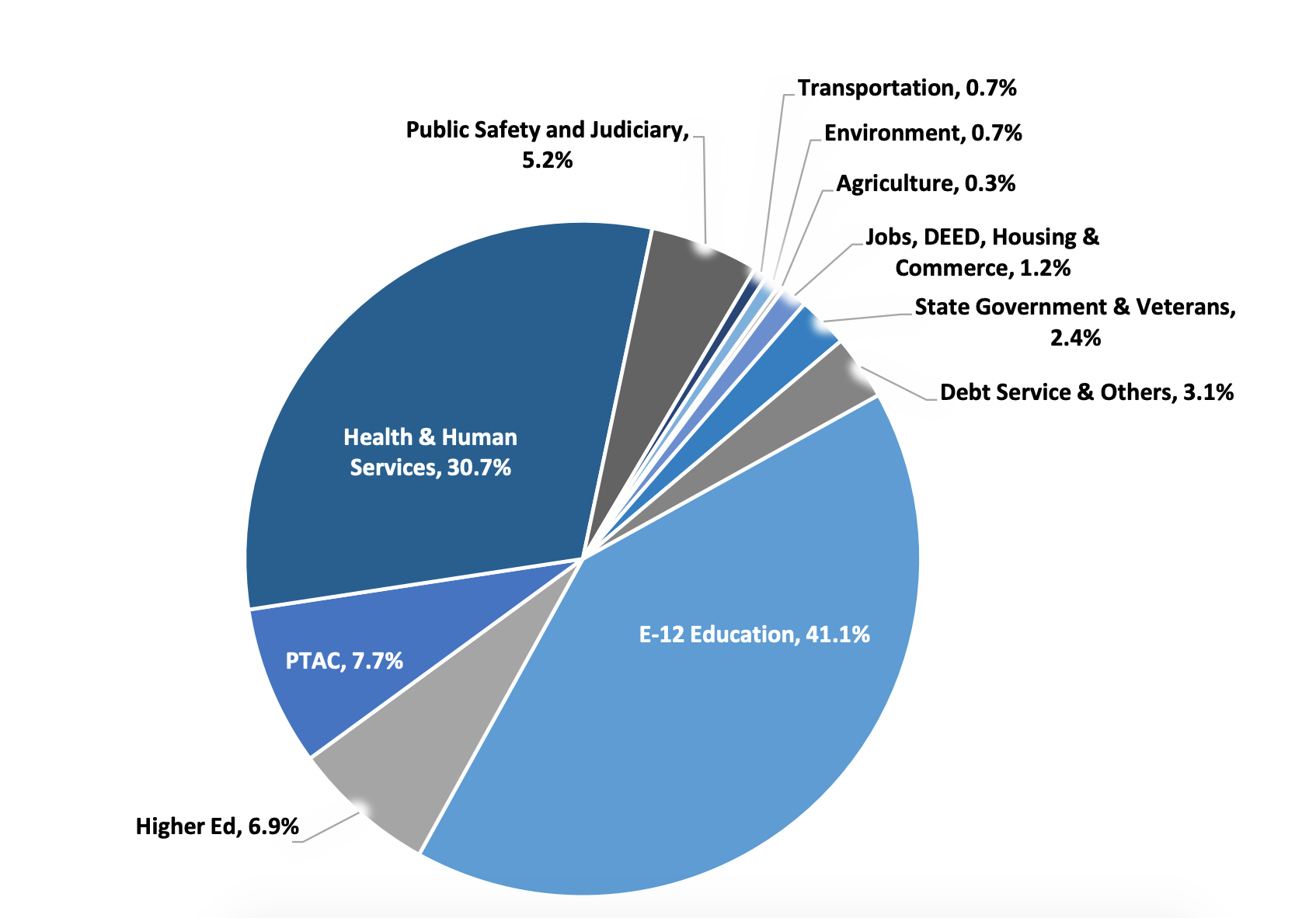How water and agriculture fared in the governor’s budget
Gov. Walz announced his state budget proposal for the next biennium on Tuesday, February 19. We took a look at how our priorities for the river and clean water fared. Our take-away so far? We have some work to do.
Overall, the governor’s $49.5 billion budget proposal prioritizes transportation, healthcare and education, with modest investments in environment and agriculture.
Budget highlights include significant new investments in education, an expansion of MinnesotaCare access, a phased-in gas-tax increase to fund transportation, and additional funding for other priorities including childcare, broadband, affordable housing and mental health assistance for farmers.
Environment and agricultural funding limited
Overall budget investments in environment and agriculture were relatively minor and failed to include the few initiatives that are essential to achieving the state’s clean water goals.
The governor proposed an increase in environmental spending of about $7 million over the biennium, from $356 million to $363 million over two years. Investments in agriculture increased by just $4 million, from $127 million to $131 million for the biennium. These increases are roughly in line with expected inflation.
FMR’s 2019 legislative priorities
Here’s an early look at how some of FMR’s 2019 legislative priorities fared in this budget.
The University of Minnesota’s Forever Green Initiative
-
Our ask: $10 million (including $6.7M from the General Fund plus $3.3M from the Clean Water Fund) for research into innovative new perennial crops and winter annuals (cover crops) that protect our water.
-
Governor’s budget: $0 in General Fund support, $3.3M from the Clean Water Fund.
The Working Lands Drinking Water Protection Program
-
Our ask: $8.5 million in General Fund support. This market-based program is designed to help farmers plant and sell alternative crops that protect drinking water while maintaining farm profitability on the 118,000 acres of highly vulnerable wellhead protection areas currently in row crops.
-
Governor’s budget: $0.
Increase the Safe Drinking Water Fee
-
Our ask: Increase the safe drinking water fee by $3.36 per year (from $6.36 to $9.72 per connection) to ensure Minnesota’s public water supply continues to be safe to drink.
-
Governor’s budget: $3.36 increase.
Chloride Management Strategy
- Our ask: $600,000 in General Fund support for the Minnesota Pollution Control Agency's Smart Salt training programs to reduce chloride pollution in Minnesota’s waters.
- Governor’s budget: $600,000 in General Fund support.
Conservation Reserve Enhancement Program (CREP)
- Our ask: No funding from the Clean Water Fund – this important land conservation program should be paid for through state bonding, to help preserve the Clean Water Fund for investments that can't be made with bonding dollars.
- Governor’s budget: $20 million from the Clean Water Fund.
Other budget items of note
Several other items were outlined in the governor’s budget that may impact water and agriculture in Minnesota, including:
- Soil & Water Conservation District levy authority: The governor recommended providing Minnesota’s soil and water conservation districts (SWCDs) property tax levy authority to fully fund their local operations. The state estimates SWCDs will levy about $26.4 million in calendar year 2020, $26.4 million in calendar year 2021 and $34.1 million in calendar year 2022.
- State buffer tax credit ($15.8M): The governor’s budget includes $15.8 million for annual property tax credits for agricultural lands placed in buffers through the state’s 2015 agricultural buffer rule. The proposal would allow landowners to apply for a $50 per acre tax credit on all lands in riparian buffers that are in full compliance with state law.
- Generic EIS for nitrate in Karst region ($2M): Minnesota’s Karst region is highly susceptible to nitrate contamination from agricultural operations. The governor proposed $2 million to prepare an interagency Generic Environmental Impact Statement (GEIS) for the region. The GEIS will compile information about sources of nitrate and evaluate solutions that prevent and remediate nitrate contamination.
- Nitrogen Fertilizer Management Plan (NFMP) implementation ($5.17M): The governor recommends $5.17M for implementation of the state’s Nitrogen Fertilizer Management Plan, which guides the state’s efforts to address nitrate contamination in groundwater.
Bonding proposals to come out next week
Several additional FMR priorities may be included in the governor’s $1.2 billion bonding proposal, which is due out next week. We are hopeful that Gov. Walz will include the following:
- Water infrastructure bonding: $102.65 million in state General Obligation bonds for much-needed wastewater and drinking water treatment systems statewide.
- Conservation Reserve Enhancement Program (CREP): Additional bonding support for CREP, an important land conservation program. While we had hoped for a full $44M in bonding for CREP, at least $22 million remains after the governor's $20M Clean Water Fund request.
- Restore the Environmental Trust Fund: $98 million in bonding support for a handful of projects originally paid for through the 2018 legislature’s controversial (and likely illegal) raid of the state’s voter-approved Environmental Trust Fund.
We look forward to working with the Walz administration, as well as legislators from the House and Senate, to advance many of the important initiatives the governor offered, as well as secure full funding for priorities like Forever Green and Working Lands. Without these programs, the state has little chance of ever achieving our clean water goals.
How you can help
Join us on April 10, 2019, for Water Action Day at the Minnesota Capitol. FMR is teaming up with dozen partners and hundreds of Minnesotans from across the state for this public day of action to let our lawmakers and leaders know we care about our water!
Become a River Guardian
Help Minnesota meet its clean water goals! Sign up to become a River Guardian and we'll let you know when important river issues arise. Our emails make it quick and easy to contact decision makers and make your voice heard. River Guardians are also invited to special events, including happy hours, where you can learn more about important legislative and metro river corridor issues.
